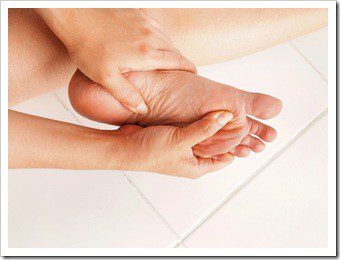
There are many different types of ligament inflammations however, plantar fasciitis can cause more inconvenience than most. This is due to the fact that the ligament is used every time you take a step, recovery and resting it is extremely difficult. The Plantar Fascia is the ligament that connects the ball of your foot to your heel and can sometimes be overstretched which leads to severe pain in the heel. However, it does not have to become a chronic condition and can be treated with a series of simple exercises.
Firstly, there are some activities that should be avoided when treating this condition. Any exercises that require a repetitive motion and force with a hard surface on the foot should be avoided, such as running or jogging.
People With Flat Feet Are At Greater Risk
Those people with flat feet, overpronation or high arches of their feet are at a greater risk of developing plantar fasciitis. All of these factors contribute to a weakening of the foot and strengthening of the foot is essential. Some other factors that can lead to plantar fasciitis are shortened or tight calf muscles, standing for long periods of time and being overweight. All of which put strain on the plantar fascia.
Tightness in the Achilles tendon can prevent you from flexing your foot properly and puts more strain on your plantar fascia. Stretching this tendon helps to prevent the chance of developing plantar fasciitis. The plantar fascia and achilles tendon typically tighten overnight and that is the reason that many people experience more pain when they first step out of bed.
Following are some simple exercises you can do to help treat plantar fasciitis:
- Sitting on the floor with your legs straight out in front of you, loop a towel or belt around the ball of your foot and pull back slowly until you feel a good pull in your calf muscle. Hold for 30 seconds and repeat 3 times. Repeat with the other leg.
- Stand facing a wall at about arm’s length and lunge forward with one leg while keeping the other behind you with the heel flat on the floor. You should feel the stretch in the calf muscle. Hold for 30 seconds and then switch to the other leg. Repeat the sequence a few times a day.
- To stretch the plantar fascia, use a wall or stair to press the bottom your toes against so that they extend upward, while the ball of your foot remains touching the floor. Hold for 45-60 seconds on each foot and repeat twice. Sports doctors recommend this be done twice a day.
- Massaging the plantar fascia by rolling your foot slowly back and forth over a rolling pin or drink can for a few minutes each day can also help to relieve plantar fasciitis.
If you follow these exercises and avoid any unnecessary pressure on your plantar fascia, your recovery time will be quicker and you will experience minimal pain.
For Your Health,
Dr. Billie King Shaw

